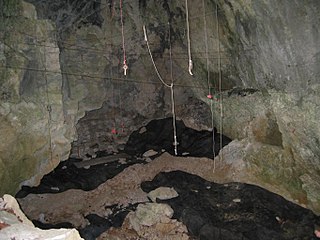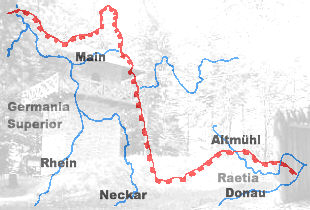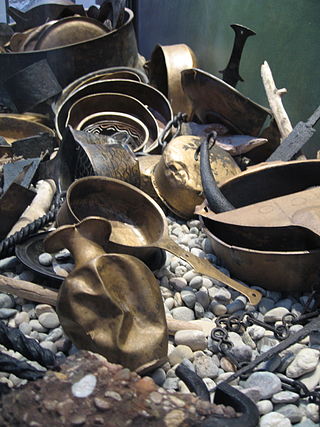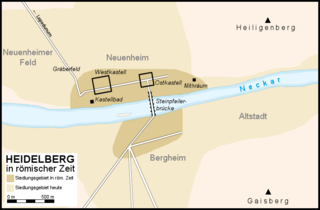Matthias Untermann (born 19 September 1956) is a German art historian and medieval archaeologist.
Matthias Untermann (born 19 September 1956) is a German art historian and medieval archaeologist.
Born in Tübingen, Untermann, son of the Indo-Germanist Jürgen Untermann, studied art history, classical archaeology and medieval history at the universities of Cologne and Zurich. In 1984, he was awarded a doctorate in medieval history under Günther Binding in Cologne with the dissertation "Kirchenbauten der Premonstratensian. Untersuchungen zum Problem einer Ordensbaukunst im 12. Jahrhundert". [1]
After Untermann had already worked on numerous excavations and research projects in the Rhineland, in Baden-Württemberg and with the city archaeology in Lübeck during his studies, he became a research assistant at the Landesamt für Denkmalpflege Baden-Württemberg in 1985. There he worked at the Department of Medieval Archaeology and Building Research in Stuttgart and Freiburg im Breisgau, focusing on: Archaeology of the buildings of monastic communities as well as urban archaeology. In this context, he carried out several important excavations on urban archaeology in Freiburg. [2]
In 1998, Untermann habilitated in art history and medieval archaeology at the University of Freiburg under Wilhelm Schlink and Heiko Steuer with the habilitation thesis "Forma Ordinis - Studien zur Baukunst der Zisterzienser im Mittelalter".
In the winter semester 1999/2000 he took over the C3 professorship for European Art History, Old Department, at the Institute for European Art History of the Ruprecht-Karls-Universität.
Untermann is involved with the German Society for Medieval and Modern Archaeology (DGAMN) and edits its newsletter, which has become an important professional journal through his work.
His research interests include:

Blaubeuren Abbey was a Benedictine monastery until the Reformation, located in Blaubeuren, Baden-Württemberg, Germany. It is now a Protestant seminary.

A grave field is a prehistoric cemetery, typically from Bronze Age and Iron Age Europe.

Geissenklösterle is an archaeological site of significance for the central European Upper Paleolithic, located near the town of Blaubeuren in the Swabian Jura in Baden-Württemberg, southern Germany. First explored in 1963, the cave contains traces of early prehistoric art from between 43,000 and 30,000 years ago, including some of the oldest-known musical instruments and several animal figurines. Because of the historical and cultural importance of these findings, in 2017 the site became part of the UNESCO World Heritage Site Caves and Ice Age Art in the Swabian Jura.
Joachim Werner was a German archaeologist who was especially concerned with the archaeology of the Early Middle Ages in Germany. The majority of German professorships with particular focus on the field of the Early Middle Ages were in the second half of the 20th century occupied by his academic pupils.

The Augustiner Museum is a museum in Freiburg im Breisgau, Germany located in the former Augustinian Monastery building. It is undergoing an extensive renovation and expansion, the first phase of which ended in 2010.
Horst Wolfgang Böhme is a German archaeologist with a focus on Late Antiquity / Early Middle Ages and research into castles.

Falkenstein Castle is a ruined hill castle near Freiburg im Breisgau on the territory of the present-day municipality Breitnau in the county of Breisgau-Hochschwarzwald in the German state of Baden-Württemberg. The castle site lies in a triangle formed by the entrance of the Höllental valley – the Lower Höllental and the Engenbach valley, not far from the Buchenbach village of Falkensteig, 617.6 m above sea level (NN) on a rocky crag that is very difficult to get to today. Of the castle itself only a few wall remains are left. It is one of the less well preserved ruins in the Breisgau.

The Imperial Limes Commission or RLK, was set up to work out the route of the Upper Germanic-Rhaetian Limes, the Roman frontier north of the Alps, and the location of its associated forts at the time of the Roman Empire. It was the first institution to engage in a cross-border, historical project after German Unification in 1871.

The Neckar-Odenwald Limes is a collective term for two, very different early sections of the Upper Germanic-Rhaetian Limes, a Roman defensive frontier line that may have been utilised during slightly different periods in history. The Neckar-Odenwald Limes consists of the northern Odenwald Limes (Odenwaldlimes), a cross-country limes with camps, watchtowers and palisades, which linked the River Main with the Neckar, and the adjoining southern Neckar Limes (Neckarlimes), which in earlier research was seen as a typical 'riverine limes', whereby the river replaced the function of the palisade as an approach obstacle. More recent research has thrown a different light on this way of viewing things that means may have to be relativized in future. The resulting research is ongoing.
The Alb Limes is a Roman frontier fortification or limes of the late 1st century AD in the Swabian Jura, also known as the Swabian Alb. The Alb Limes runs for just under 135 kilometres from Rottweil in the southwest to Heidenheim an der Brenz in the northeast.

Alte Burg is a large Celtic hilltop fortification, or hillfort, that may have been used as a cult or assembly site for the regional population. It is located 9 kilometers from a major settlement of the Hallstatt and early La Tène period, the Heuneburg. Alte Burg lies in the municipality of Langenenslingen in Baden-Württemberg, Germany.

The Venus figurines of Petersfels are several small female statuettes from the Upper Paleolithic era, carved from jet lignite. The tallest figurine is called the Venus of Engen. The figurines were discovered in the Petersfels caves near Engen, Baden-Württemberg, excavated in 1927–1932 by Eduard Peters und Volker Toepfer and then in 1974–1976 and 1978 by Gerd Albrecht. They stand between 1.5 and 4 cm tall and are about 15,000 to 11,500 years old, created during the Magdalenian era. They are housed in the Museums of Freiburg im Breisgau and Engen.
Heiko Steuer is a German archaeologist, notable for his research into social and economic history in early Europe. He serves as co-editor of Germanische Altertumskunde Online.

The ruins of Zavelstein Castle, a former hill castle, stand at 560 m above sea level (NN) on a hill spur above the Teinach valley on the southeastern edge of the municipality of Bad Teinach-Zavelstein in the county of Calw in the south German state of Baden-Württemberg.
The Lautertal Limes is a Roman limes section of the early 2nd century which is located between the River Neckar and the Swabian Jura. It extends for a distance of 23 kilometres (14 mi), running, straight as a die, from the present-day municipality of Köngen on the Neckar in the northwest to Donnstetten in the Swabian Jura to the southeast.

The Limesfall is the name given to the abandonment of the Upper Germanic-Rhaetian Limes in the mid-3rd century AD by the Romans and the withdrawal of imperial troops from the provinces on the far side of the rivers Rhine and Danube to the line of those rivers. It is sometimes called the fall of the limes.

Sebastian Brather is a German medieval archaeologist and co-editor of Germanische Altertumskunde Online.
Günther Binding is a German art historian and retired professor of art history and urban conservation at the University of Cologne.

The Martinskirche is the Lutheran main church in Sindelfingen, Baden-Württemberg, Germany. It was built in Romanesque style as a basilica with a flat wooden ceiling, then part of a monastery. Today, the church is also a venue of church music events.

During ancient Rome, a settlement of unknown name existed at the site of Heidelberg. It consisted of a fort founded around 70 AD in the present-day district of Neuenheim and a civilian settlement (vicus) that developed around the fort and also extended into the present-day district of Bergheim. The original wooden military camp was replaced by a stone fort around the year 90. In 80/90 there was a wooden bridge over the Neckar, and in 200 there was a bridge built on stone pillars. Even after the garrison of the Heidelberg fort was withdrawn around the year 135, the civilian settlement continued to flourish thanks to its favorable geographical location and developed into a prosperous pottery center. Nevertheless, Heidelberg always remained in the shadow of neighboring Lopodunum, which was the main city of the region at the time. As a result of the Alamanni invasions, Roman Heidelberg was abandoned in the 3rd century as part of the so-called Limesfall.